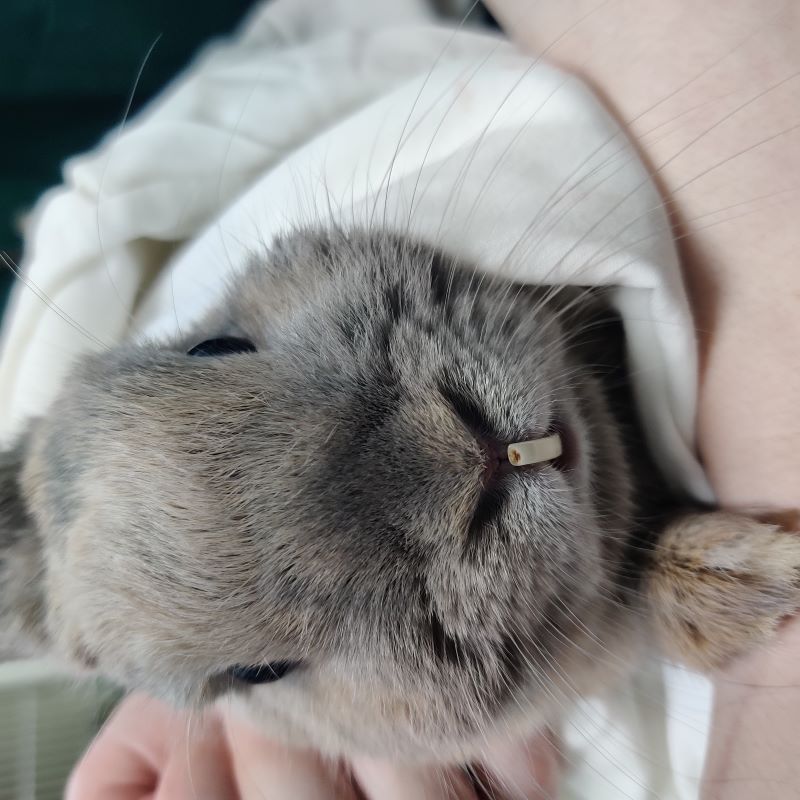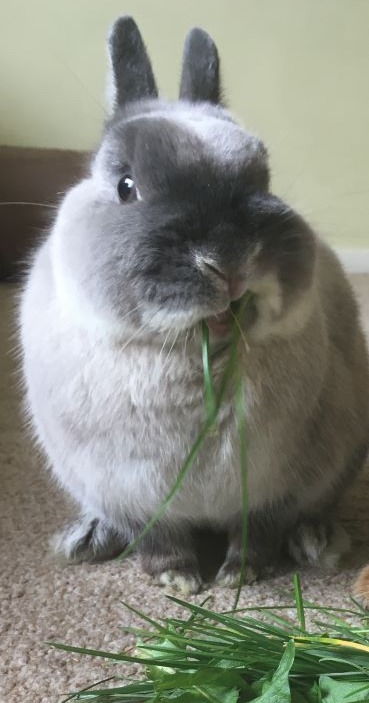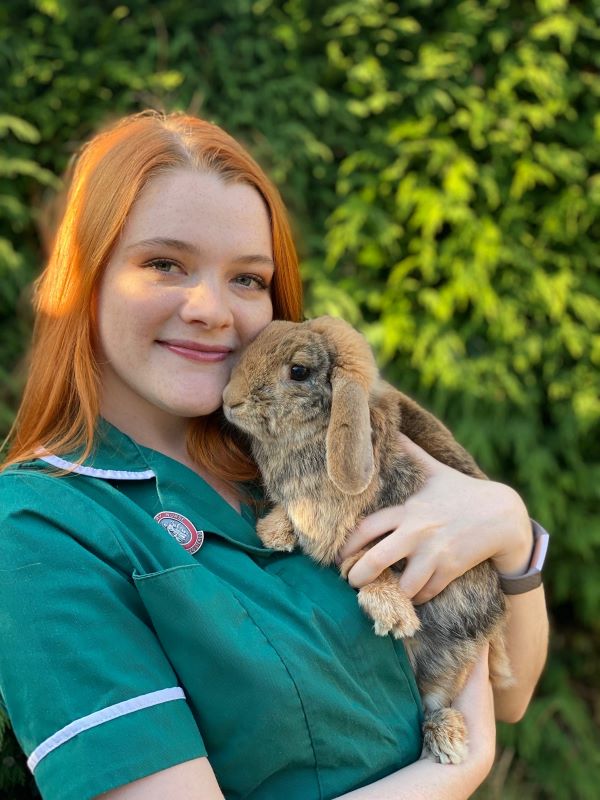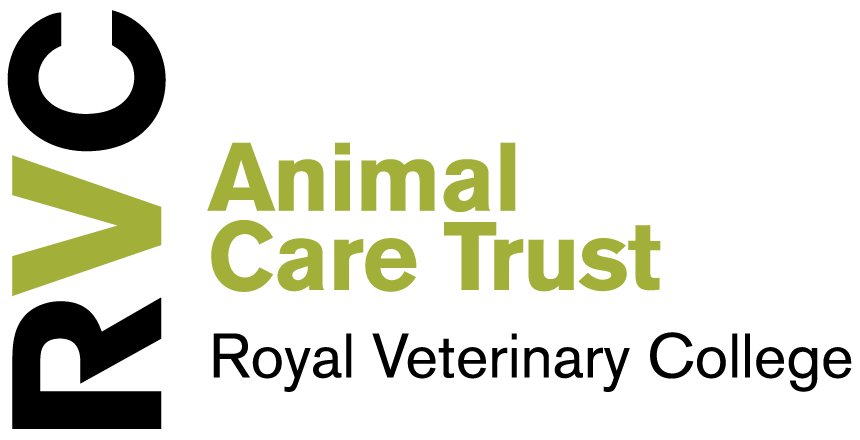RVC Animal Care Trust funds RVC Research into dental disease in rabbits
New RVC research, funded by the RVC Animal Care Trust (ACT) has identified that each year, more than one in seven companion rabbits under primary veterinary care in the UK are suffering from dental disease, a condition which can cause severe pain. The most significant demographic risk factors for rabbits in developing dental disease were found to be older age, being male, and having low bodyweight.

Veterinary professionals have always believed dental disease to be one of the most common and serious disorders in companion rabbits, often resulting in significant pain, enforced selective eating and behavioural changes in the animal, but now this new study provides evidence to show the true scale of the issue.
Previous studies suggested that lop ear and brachycephalic (flat-faced) skull conformations were associated with an increased risk of dental disease, but those studies were limited by small sample size and selection bias. This new study, therefore, aimed to strengthen the evidence base on demographic and conformational risk factors for dental disease in rabbits by using the largest sample of rabbits ever investigated for a study of this kind.
The RVC research team, consisting of experts from VetCompass, the Animal Welfare team, Exotics team and an MRes (Master of Research) student, collated patient records from 161,979 rabbits under UK first opinion veterinary care in 2019. A random sample of 2,219 confirmed cases of dental disease was extracted and compared against 117,890 rabbits without recorded dental disease. Using these data, the team analysed conformational characteristics, including ear type and skull shape of the rabbits, to explore associations with the disease.

The research found that a significant 15.36% of all rabbits were formally diagnosed with dental disease in 2019, though this figure may only be the tip of the iceberg, with many more rabbits believed to be affected but not formally diagnosed. Of the rabbits diagnosed, there were 3.14% with incisor teeth affected and 13.72% with cheek teeth affected. Over half of the affected rabbits (8.20% of all rabbits) were newly diagnosed with dental disease in 2019.
The findings identified that older age, lower bodyweight and being male were the most important demographic risk factors for rabbits in developing dental disease. Additional findings also include that:
- Lop-eared compared to erect-eared rabbits, and brachycephalic skull shapes compared to normocephalic skull shapes, were not significant risk factors for dental disease, suggesting the conformation of a rabbit plays a much lesser role in whether the animal develops the disease than other factors such as age and diet.
- Rabbits that were five years old and older had 7.58 times the risk of dental disease compared to rabbits aged less than one.
- Rabbits weighing more than 2kg had a significantly lower risk of developing dental disease compared with rabbits weighing less than 1.49kg.
- Male rabbits had a 1.23 times higher risk of having dental disease than female rabbits.
This research highlights a dental disease crisis in pet rabbits and suggests that all companion rabbits would benefit from regular dental examinations, irrespective of breed, ear type or skull shape. Particular emphasis should be placed on rabbits with a lower-than-expected bodyweight, that are older or male. Owners should also be vigilant for subtle signs of dental issues, such as selective eating, reluctance to eat hay, drooling and pawing at the face. Owners with any concerns about dental disease in their rabbit should seek advice from their veterinary practice.
Nadja Hale, Head of ACT Fundraising said:
"One of the ACT’s aims is to improve animal health through research that makes a real impact to the lives of animals. Rabbits are understudied, and both aural and dental disease can be chronic and painful for them. We were delighted to be able to support this project and collaborate with the British Rabbit Council to help them to develop targeted breeding strategies and guidance to improve rabbit welfare."
Maria Jackson, Veterinary Nurse and Research Assistant in Rabbit Health at the RVC, and lead author of the paper, said:

“Despite being the third most popular pet in the UK, I feel rabbits have been largely overlooked in companion animal research. Our study shows over 230,000 pet rabbits in the UK may be suffering with dental disease at this moment in time. Routine dental checks and feeding a diet predominantly of good quality hay is clearly important for all our rabbits, not just those with lopped ears or a short face.”
Dr Dan O’Neill, Associate Professor of Companion Animal Epidemiology at RVC, and co-author of the study, said:
“This new research highlights a major welfare crisis in pet rabbits caused by dental disease. Owners have a legal duty to protect their animals from unnecessary suffering. This can begin with ensuring all rabbits get an appropriate diet of mainly hay and grass. The biggest single risk factor for pet rabbits developing dental disease appears to be captivity.”
Dr Charlotte Burn, Associate Professor in Animal Welfare and Behaviour Science at the RVC, said:
“Any rabbit can suffer dental disease, and these new findings suggest that owners and vets should particularly watch out for it as rabbits get older, especially if the rabbits are thin and male.
“Interestingly, this very large study didn’t show any association between rabbit head and ear shape and dental disease at all, casting doubt on whether brachycephalic and lop-eared rabbits may be more affected than other rabbits.”
This study was supported by a grant from the Universities Federation for Animal Welfare (UFAW).
Dr Huw College, Chief Executive and Scientific Director of UFAW, said:
“A crucial part of our work as an animal welfare charity is providing grants and awards to support innovative research which helps us better understand animal welfare problems. We were therefore delighted to support this study which has advanced our understanding of dental disease in pet rabbits and suggested some practical steps to improving welfare for these animals too.”

